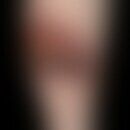DefinitionThis section has been translated automatically.
Lincosamide. Semi-synthetically modified analogue of lincosamide which is no longer used today. It is a weak base with lipophilic properties.
Half-lifeThis section has been translated automatically.
You might also be interested in
Pharmacodynamics (Effect)This section has been translated automatically.
Clindamycin binds to the 50S subunit of bacterial ribosomes and inhibits protein synthesis. This results in a bacteriostatic effect. Clindamycin is the most effective antibiotic against anerobes.
Spectrum of actionThis section has been translated automatically.
IndicationThis section has been translated automatically.
Dosage and method of useThis section has been translated automatically.
- Systemic:
- 0.6-1.8 g/day p.o. in 3-4 ED or 0.9-1.8 g/day i.v. in 3-4 ED For severe infections 2.4-2.7 g in 2-4 cycles/day.
- Children < 10 kg: 3 times/day 0.38 g/kg bw/day and higher.
- Children > 4 weeks: 20-40 mg/kg bw/day distributed over four cycles.
- Topical: Apply 1-2 times/day after thorough skin cleansing to the diseased areas.
Standard concentrationThis section has been translated automatically.
Undesirable effectsThis section has been translated automatically.
Gastrointestinal side effects:
- Symptoms of diarrhoea
- Stomatitis
- Oesophagitis
immune reactions:
- Maculo-papular exanthema (Papakonstantinou E et al. 2018)
- Contact dermatitis (Veraldi S et al. 2019)
- Rare are:
- Sore throat
- Headaches
- Skin dryness
- Reports on the occurrence of a"Symmetrical drug-related intertriginous and flexural exanthema" (Cabrera Hernandez V et al. 2019)
- Urge to urinate
PreparationsThis section has been translated automatically.
Note(s)This section has been translated automatically.
Use for max. 10-12 weeks due to development of resistance. Do not use together with alcoholic benzoyl peroxide solutions.
Very good tissue penetration, hardly liqourgable, strong accumulation in macrophages.
Inducible MLSB (macrolide lincosamide B-streptogramin) resistance, which may develop in the presence of erythromycin resistance, prohibits the use of clindamycin despite sensitive in vitro testing in the antibiogram.
LiteratureThis section has been translated automatically.
Cabrera Hernandez V et al (2019) Symmetrical drug-related intertriginous and flexural exanthema due to clindamycin. BMJ Case Rep 12:e230077.
- Garcia-Lechuz JM et al (2007) Spanish Pneumococcal Study Network. Streptococcus pneumoniae skin and soft tissue infections: characterization of causative strains and clinical illness. Eur J Clin Microbiol Infect Dis 26: 247-253
-
Monteagudo B et al (2018) Clindamycin-induced Maculopapular Exanthema with Preferential Involvement of Striae Distensae: A Koebner phenomenon? Acta Dermatovenerol Croat. 26:61-63
Papakonstantinou E et al (2018) Generalized reactions during skin testing with clindamycin in drug hypersensitivity: a report of 3 cases and review of the literature. Contact Dermatitis 78:274-280
- Rostetter C et al (2017) Amoxicillin with clavulanic acid. Standard antibiotic in general dentistry. Swiss Dent J 127:654-655.
- Veraldi S et al. (2019) Allergic contact dermatitis caused by clindamycin. Contact dermatitis 80:68-69.




